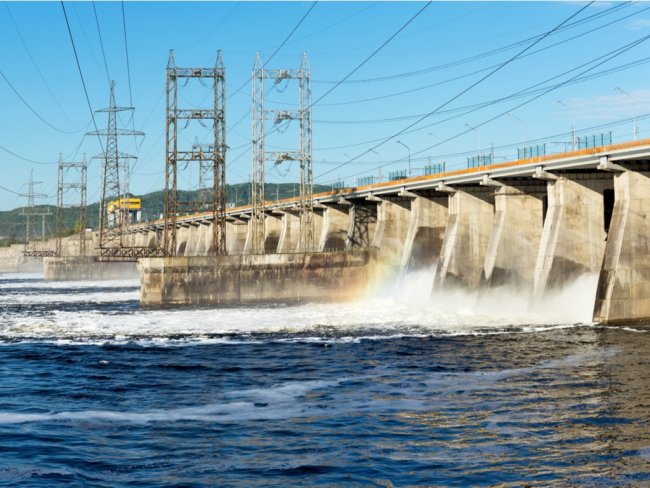The advantages of combining power plants in the power system
A power system is a group of power plants connected by electrical networks to each other and to consumers of electrical energy. Thus, the system includes substations, distribution points and electrical networks with different voltages.
In the initial period of development of the electric power industry, power stations worked in isolation from each other: each station worked for its own power grid, feeding its limited group of consumers. However, at the beginning of the 20th century, the stations began to be combined into a common network.
The first electric power system in Russia - the Moscow one - was created in 1914 after the connection of the Elektroperechaya station (currently GRES -3, Elektrogorska GRES) with the Moscow Power Plant on a line of 70 km.
The impetus for the development of connections between stations and the creation of energy systems was dormant Plan GOELRO… Since then, the development of the power industry has proceeded mainly along the lines of creating new and growing existing power systems and then linking them into large associations.
Combining stations for parallel work in systems has the following advantages:
-
the possibility of full use of hydropower resources. Discharge of water into rivers varies greatly both within the year (seasonal fluctuations, storm peaks) and from year to year. In isolated operation of the hydroelectric power plant, taking into account the need to ensure uninterrupted power supply to consumers, its power should be selected at a very low flow rate, sufficiently ensured. At the same time, at high flow rates, a significant part of the water will be discharged through the turbines and the overall utilization rate of the watercourse resources will be low;
-
the possibility to ensure the operation of all stations in economically profitable modes. The station load pattern fluctuates noticeably within a day (daytime and evening peaks, nighttime dips) and throughout the year (typically maximum in winter, minimum in summer). With isolated operation of the station, its units will inevitably have to work for a long time in economically unfavorable modes: at low loads and with low efficiency. The system provides for the stopping of some of the blocks when the load is reduced and the distribution of the load between the remaining blocks;
-
the possibility of increasing the unit capacities of the thermal stations and their blocks, reducing the required reserve capacities.In isolated power plants, the capacity of the units is largely limited by the economic capacity of the reserve. When creating a power system, the limitation of the unit power of the unit and the capacity of the thermal power plants is practically removed, therefore the power system allows the construction of super-powerful thermal power plants, which, other things being equal, are the most economical.
-
reducing the total installed capacity of all stations in the system or combination of systems and thus significantly reducing the required capital investment. The maximums of the load schedules of the individual stations do not coincide in time, therefore the total maximum load of the system will be less than the arithmetic sum of the maximums of the stations. This discrepancy will be particularly noticeable when combining systems located in different time zones;
-
increasing reliability and uninterrupted power supply. Modern electrical power systems ensure the reliability of the power supply, which is unattainable in the isolated operation of the station;
-
ensuring high quality of electricity, characterized by the degree of constant voltage and current frequency.
Power systems and their associations have a decisive influence on all aspects of the development of the power industry, in particular on the location of power plants, which in particular enables the placement of power plants near sources of energy and water resources.
During the operation of energy systems, a number of important and complex technical problems arise.For their quick solution, these systems have dispatch services equipped with equipment that allows you to continuously monitor the system's operating modes.
See also on this topic:
Load modes of power systems and optimal load distribution between power plants
Automation of power systems: APV, AVR, AChP, ARCH and other types of automation

